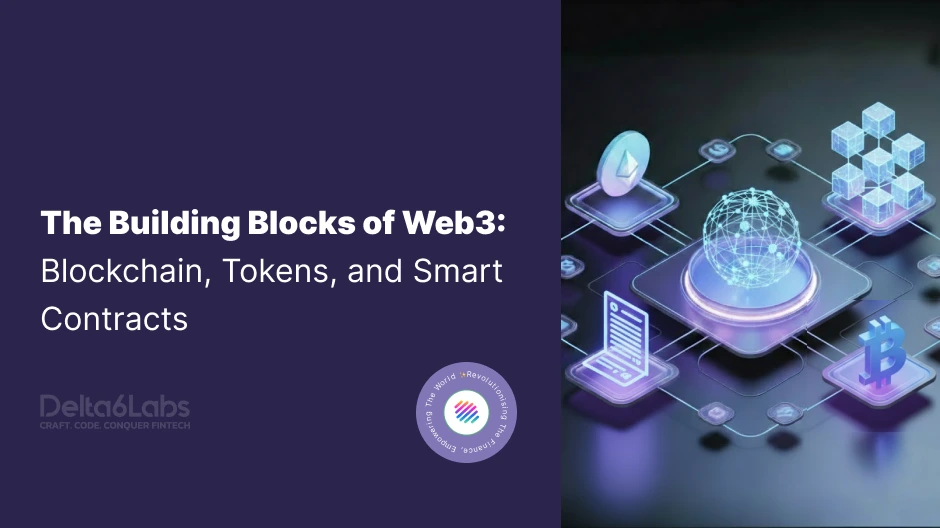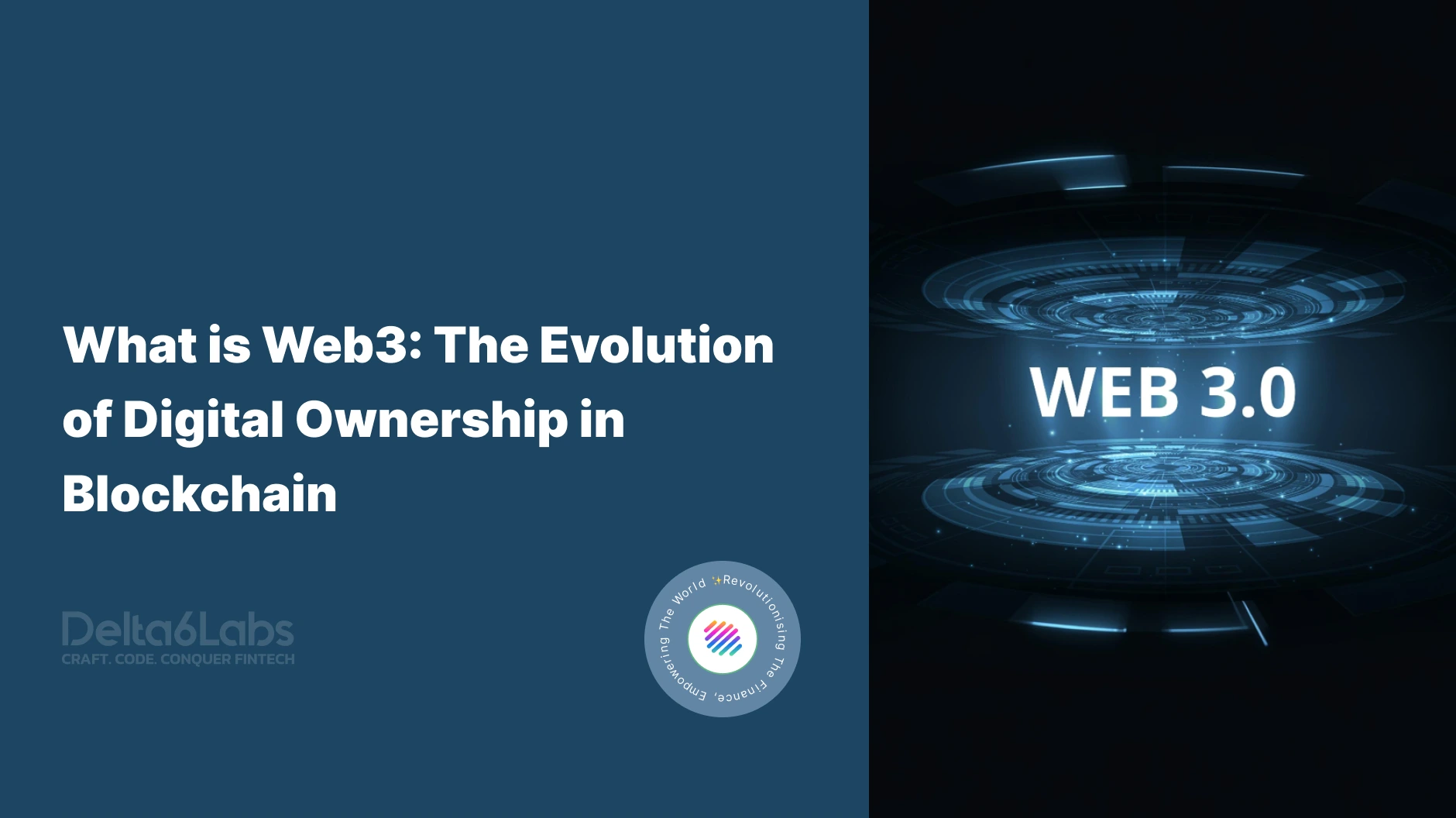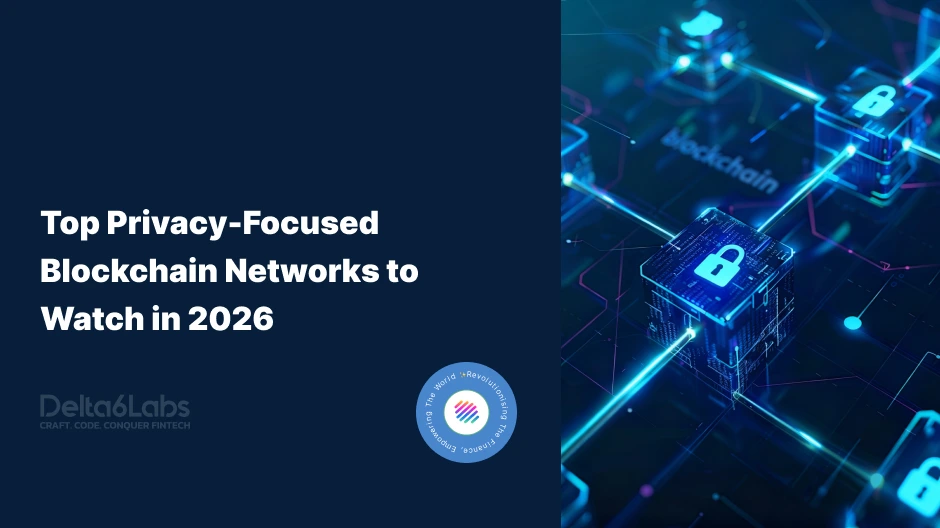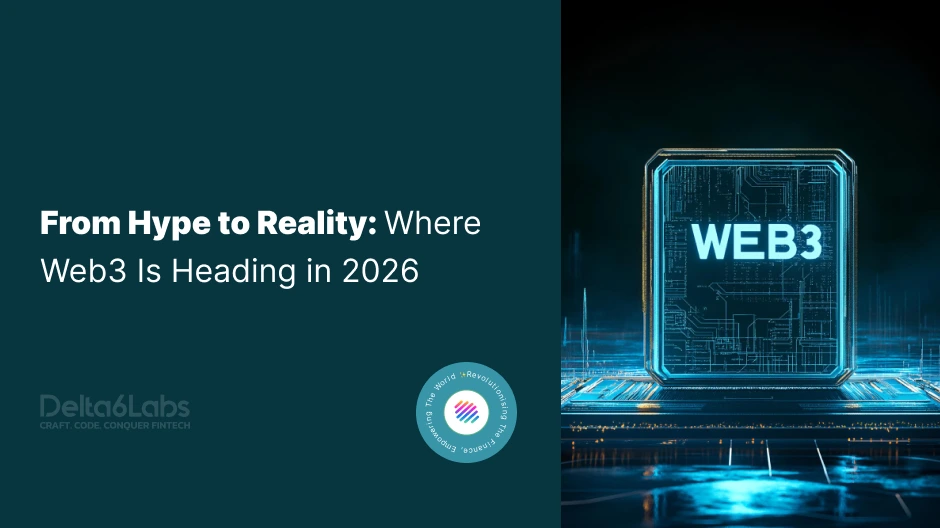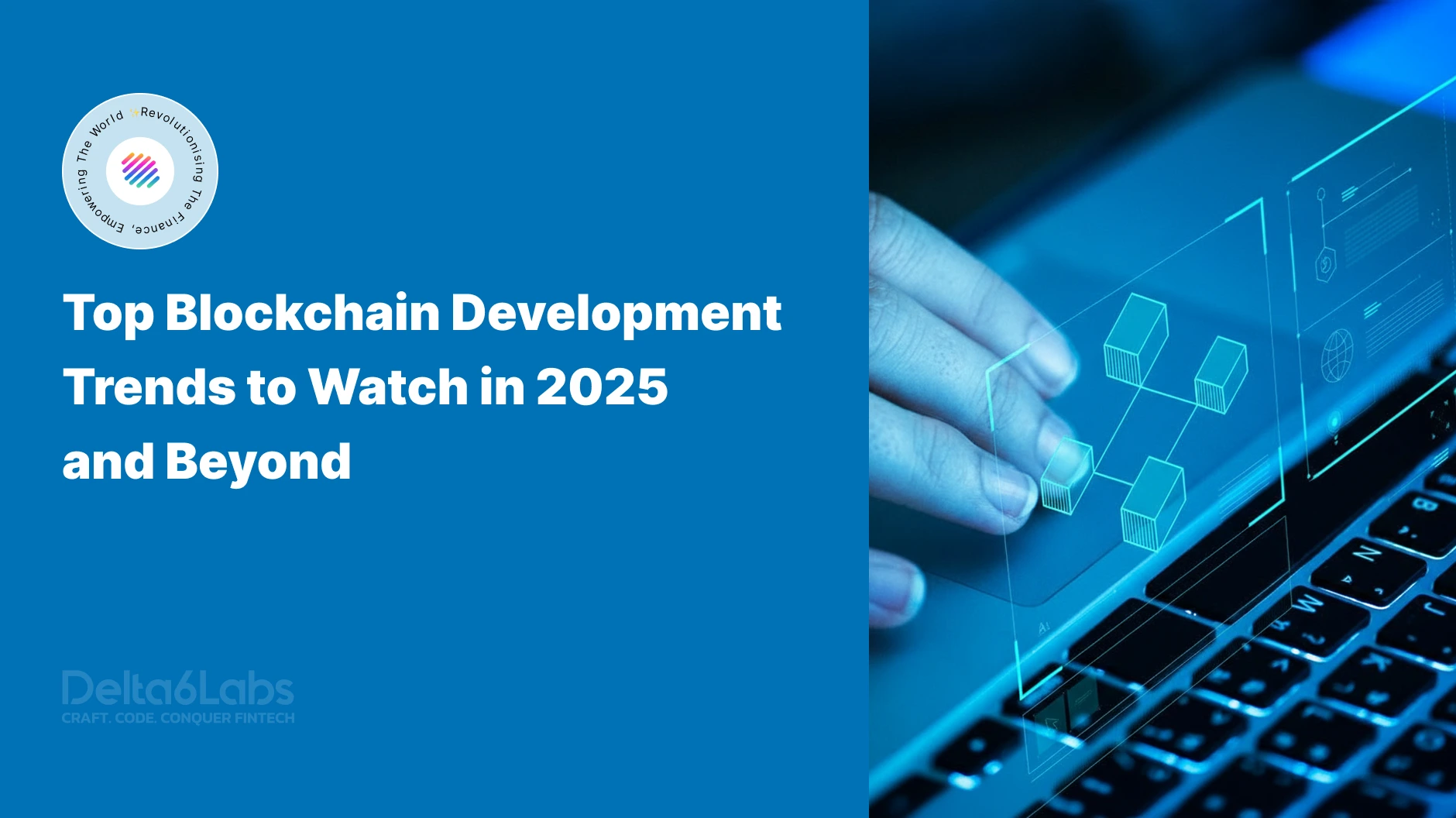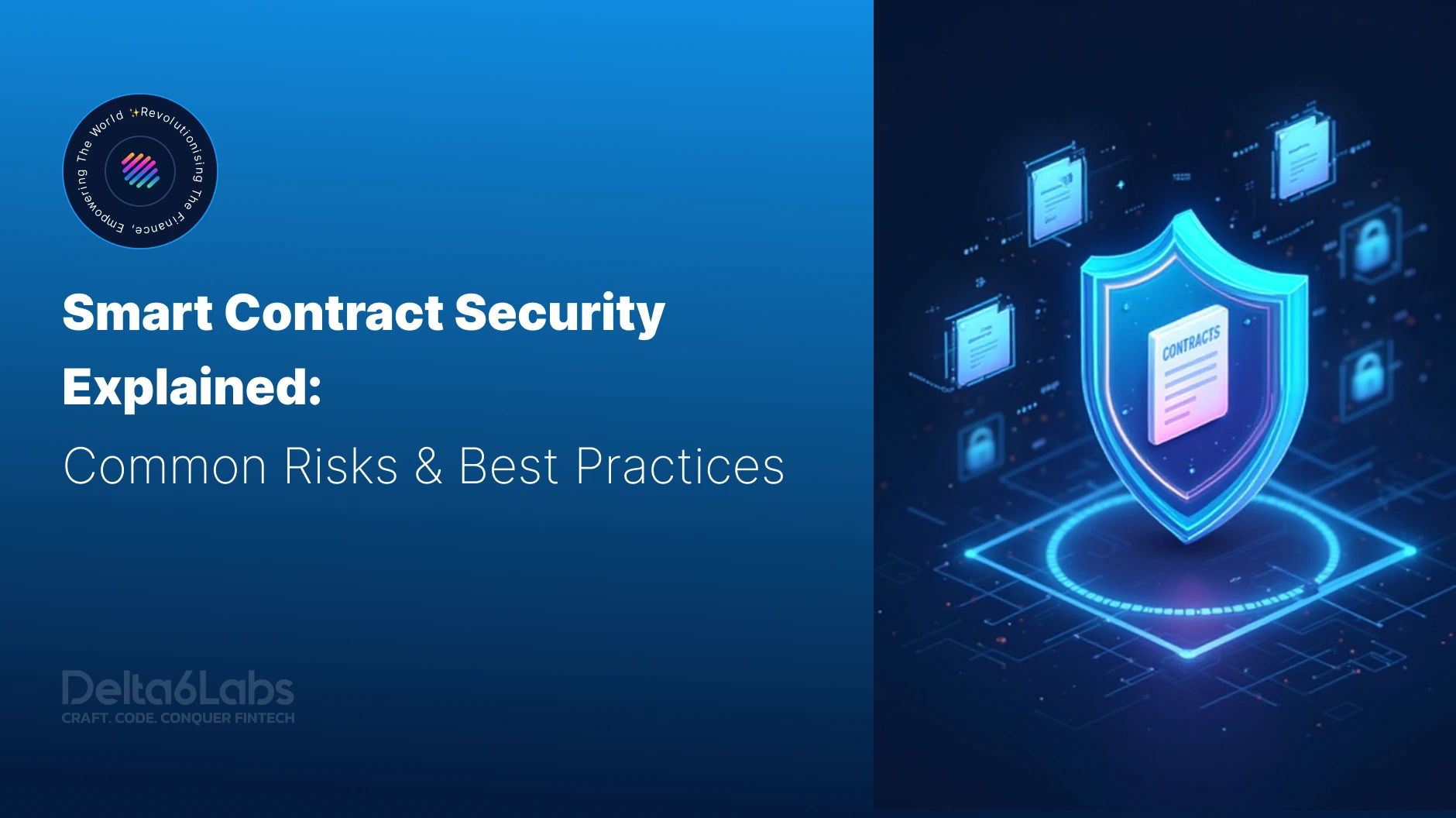Building Blocks of Web3: Blockchain, Tokens, and Smart Contracts
Table of Contents
Key Takeaways
- Web3 represents a shift from platform-controlled internet (Web2) to a decentralized ecosystem where users own their data, identity, and digital assets.
- Blockchain technology ensures transparency, immutability, and security, forming the foundational infrastructure of Web3 networks and applications.
- Web3 uses multiple token types: utility, security, governance, and NFTs, to enable digital value transfer, incentives, ownership, and community-driven governance.
- Smart contracts execute rules automatically without intermediaries, enabling decentralized finance (DeFi), NFT platforms, DAOs, and autonomous dApps.
- With tokenized economies, community-governed platforms, and decentralized data control, Web3 is shaping the next-generation digital economy.
The internet is evolving with a steady pace, moving from centralized control to decentralized and AI driven technology. This transformed version of the internet, known as Web3, shows the new generation of the internet where users own their data, applications are autonomous, and value is transferred directly without involving any third party. The growth of Web 3 can be easily understood by its global market size, which was valued at USD 2.2 billion in 2023, and is projected to reach USD 33.5 billion in 2033.
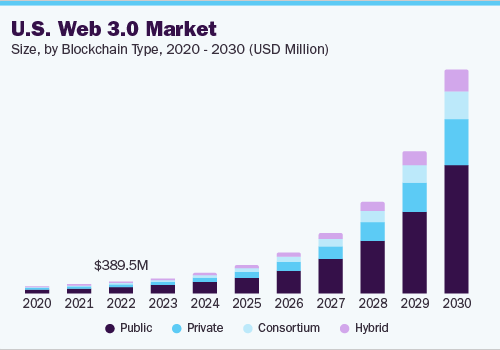
There are three vital components that are considered as the foundation of this technological transformation, including blockchain, tokens, and smart contracts. Collectively, they operate as the backbone of Web3, enabling transparency, automation, and trust in a digital-first world.
In this blog, we will discuss the working of these basic building blocks, their significance, and how they are transforming the decentralized ecosystem of Web3.
Understanding Web3: The Latest Version of the Internet
Before exploring the details of its fundamental components, the readers should be aware of what Web3 actually means.
The very first version of the internet, Web 1.0, allowed users to only read information, which we also call browsing through the internet. The second phase, which is known as Web 2.0, made the internet more interactive for the users and empowered them to read and write content, such as social media platforms. However, there was one issue with this: big tech companies gained control over user data, monetizing it through ads and centralized services.
Web 3.0 addressed the issue of centralization faced by the users during the second phase of the internet by allowing them to own their data and digital assets, such as cryptocurrencies and NFTs. Driven by blockchain technology, it replaces centralized intermediaries with decentralized networks, ensuring that control of the data must return to the users and creators.
The main purpose of Web3 is to provide ownership, transparency, and decentralization, with the help of blockchain, tokens, and smart contracts.
Blockchain: The Backbone of Web3
Blockchain technology is the heart of Web3, which is distributed ledger system that records transactions and data across a network of computers in a secure, immutable, and transparent manner.
Unlike traditional databases managed by a centralized entity, blockchains are decentralized. Every participant in the network have a copy of the ledger, and once data is added, it cannot be changed without the permission of all the participants. This creates a credible system, where participatory nodes don’t have to rely on intermediaries to verify transactions.
How Blockchain Works?
A blockchain consists of blocks, groups of transactions linked together in chronological order. Each block contains:
- Transaction Data: The record of digital exchanges.
- A Timestamp: it shows the time when the block was created.
- A Cryptographic Hash: A unique identifier linking it to the previous block.
This chain-like structure ensures that any attempt to alter data in one block would invalidate all subsequent blocks, making blockchain inherently secure.
Types of Blockchains
- Public Blockchains – These blockchains are open to everyone, examples of public blockchains are Bitcoin and Ethereum.
- Private Blockchains – These blockchains are controlled by a single organization for internal purposes.
- Consortium Blockchains – Such blockchains are managed by a group of organizations for shared transparency and use.
- Hybrid Blockchains – They Combine public accessibility with private data control.
Why Is Blockchain Significant for Web3?
Blockchain provides trust, transparency, and decentralization, the three major pillars of Web3. It enables users to own their data, and assets without depending on centralized authorities like banks, governments, or corporations.
Tokens: The Digital Representation of Value
If blockchain is the infrastructure, tokens are the assets that move through it. Tokens represent units of value, they can be currencies, ownership stakes, voting rights, or utility assets within decentralized ecosystems.
Tokens are integral to Web3 because they create an economy within the decentralized internet, allowing users to exchange, invest, and participate in governance.
Types of Tokens
Utility Tokens
These types of tokens allow access to products or services within a blockchain ecosystem. For example, ETH (Ethereum) is used to pay for transactions on the Ethereum network.
Security Tokens
These tokens represent ownership in real-world or digital assets, such as company shares or property. They are subject to regulations similar to traditional securities.
Governance Tokens
Holders of governance tokens can vote on changes or proposals within a decentralized platform, such as adjusting transaction fees or upgrading protocols. These tokens provide governance rights to the holders.
Non-Fungible Tokens (NFTs)
NFTs are unique, indivisible tokens that represent ownership of digital items like art, music, or collectibles. They empower users by providing them true digital ownership and have revolutionized creative industries.
Role of Tokens in Web3
Tokens serve multiple purposes:
- One of the most critical role of tokens is to Incentivizing participation in decentralized networks.
- They also facilitate. peer-to-peer transactions without the need for intermediaries.
- Enabling governance and decision-making in decentralized organizations (DAOs).
- These tokens help Create programmable economies that reward engagement and innovation.
For example, in decentralized finance (DeFi), tokens are used for lending, borrowing, staking, and yield farming, all without traditional banks.
Smart Contracts: The Automation Engine of Web3
Smart contracts are self-executing programs that run on blockchains, automatically enforcing agreements once predefined conditions are met. They eliminate the need for intermediaries like lawyers, brokers, or banks, making transactions faster, cheaper, and more secure.
How Smart Contracts Work?
Smart contracts operate on a “if/then” logic —
For Example:
- In DeFi lending, if a borrower repays a loan, then the smart contract automatically releases the collateral.
- In NFT marketplaces, if a buyer sends payment, then the ownership of the NFT is transferred automatically.
Every transaction is recorded on the blockchain, ensuring transparency and immutability.
Benefits of Smart Contracts
Smart contracts have multiple benefits in the web 3.0, some of them are
- Trustless Transactions: No middleman is required to execute any transaction or payment, the smart contract code enforces the rules.
- Cost Efficiency: Smart contracts are proven to be highly cost efficient. They eliminates intermediary fees and administrative overheads.
- Transparency and Security: Every contract and execution is publicly verifiable on the blockchain.
- Automation and Speed: Transactions execute instantly once conditions are met.
- Global Accessibility: Anyone with internet access can deploy or interact with smart contracts.
Applications of Smart Contracts
- Decentralized Finance (DeFi): Enabling lending, borrowing, and trading.
- NFT Marketplaces: Managing ownership transfers.
- Supply Chain Management: Tracking product authenticity.
- Gaming and Metaverse: Powering play-to-earn models and virtual economies.
- DAOs: Automating community governance.
Smart contracts bring efficiency, transparency, and automation, making Web3 truly decentralized and autonomous.
How Blockchain, Tokens, and Smart Contracts Work Together?
These three building blocks, blockchain, tokens, and smart contracts, don’t operate in isolation. They form a synergistic framework that defines the Web3 ecosystem:
- Blockchain provides the infrastructure and trust layer, an immutable ledger for data and transactions.
- Tokens serve as digital assets or value units, allowing users to exchange, own, and govern ecosystems.
- Smart Contracts act as the automation layer, executing rules and managing token interactions.
Together, they enable decentralized applications (dApps), decentralized autonomous organizations (DAOs), and decentralized finance (DeFi), all key pillars of Web3.
Powering the Web3 Future with Delta6Labs
At Delta6Labs, we are committed to driving the Web3 revolution through cutting-edge blockchain, token, and smart contract solutions.
Our expertise lies in:
- Blockchain development for scalable, secure ecosystems.
- Smart contract development for DeFi, NFT, and DAO platforms.
- Token creation and management complying with regulatory standards.
- Web3 consulting for startups and enterprises transitioning to decentralized models.
By integrating these building blocks, we help businesses create transparent, efficient, and user-owned ecosystems that define the next era of the internet.
Conclusion
The evolution of Web3 marks a pivotal shift in how we perceive ownership, value, and trust online. Blockchain provides the infrastructure, tokens power the economy, and smart contracts automate operations, together forming the foundation of a decentralized digital world.
As Web3 adoption accelerates, these technologies will continue to empower individuals, transform industries, and redefine how value is created and exchanged globally.
Frequently Asked Questions
Disclaimer:
The information on this blog is for knowledge purposes only. The content provided is subject to updates, completion, verification, and amendments, which may result in significant changes.
Nothing in this blog is intended to serve as legal, tax, securities, or investment advice of any investment or a solicitation for any product or service.
